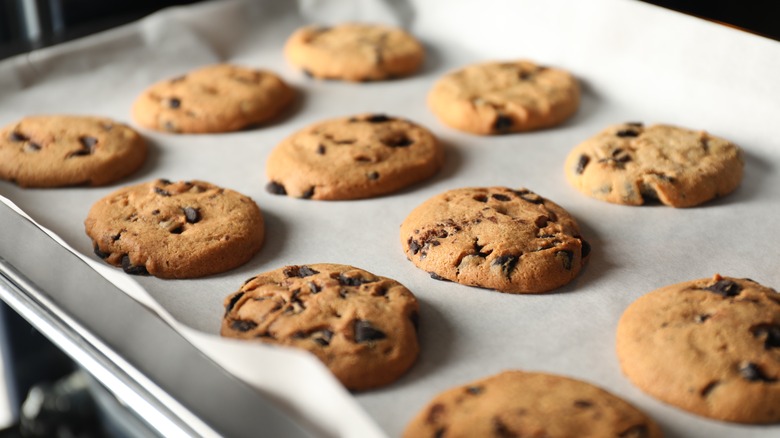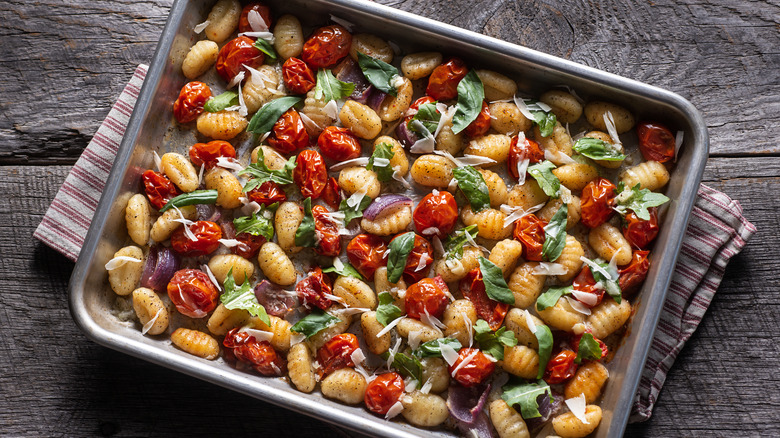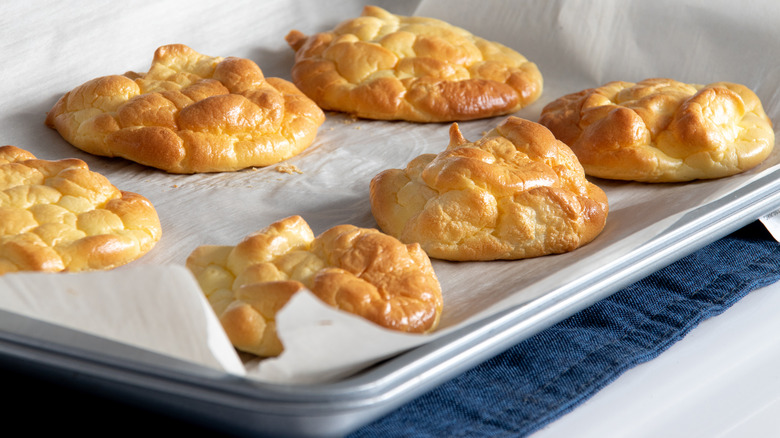Why Your Sheet Pans Are Warping In The Oven
We may receive a commission on purchases made from links.
Sheet pans are a kitchen staple. The versatile trays can be used to whip up just about anything in the oven, from cookies and pastries to even cakes like chocolate peanut butter Swiss rolls thanks to their raised rim. The rimmed pans also help keep juices from roasting vegetables and meat from dripping down while they cook. But, for all their baking glory, sheet pans sure can cause quite a scare when they pop in the oven. The startling sound results from warping pans, which occurs as their metal expands from temperature changes caused by the oven's high heat.
The clanging noise is unnerving, but it's the least of your problems. Buckled trays can also impact what you're cooking by making it difficult to roast or bake food evenly. As the pan warps, baked goods like cookies and biscuits may also shift while they're cooking, which can greatly impact their overall shape. Put simply: They'll still taste good, but they probably won't look very appealing.
Temperature changes cause sheet pans to warp
Whether you put a room-temperature sheet pan into a hot oven or run cold water on a searing baking tray — any kind of drastic temperature change can cause the material to warp. That's because metal actually changes size when it's heated or cooled, a process known as thermal expansion and contraction, respectively.
As the shapeshifting metal is heated, the surge in energy causes the atoms to move faster and spread out more, resulting in the pan's expansion. Conversely, the atoms move slower and come closer together when the pan is cooled, thus causing the pan to contract. When it comes to sheet pan cooking, temperature fluctuations can also arise due to the way that food is positioned on the tray's baking surface. For example, if you spread out veggies haphazardly on the pan, the bare spots will heat up faster, which can also result in your tray bending and popping.
Fortunately, sheet pans usually straighten themselves out once their temperature equalizes. However, there are simple ways you can help reduce the chances that your favorite baking pan buckles under the heat in the first place.
How to prevent sheet pans from warping
As it turns out, not all sheet pans are created equal. Thinner trays tend to warp more easily compared to their thicker counterparts, which are able to absorb heat better. Similarly, thin aluminum and copper pans are also more prone to warping because they're softer than other materials, such as stainless steel. So, one of the easiest ways to prevent trays from becoming misshapen is to opt for a high-quality and more durable warp-resistant baking sheet, such as the OvenBond Tri-ply Medium Sheet Pan by Hestan Provisions.
Another way to reduce the likelihood of your pan contorting is to avoid overloading it with food, which can put a heavy strain on the tray and cause heat to become distributed unevenly. You can also avoid drastic temperature changes by letting your pan warm up in the oven for a few minutes while the cooker preheats. Not only will this help prevent unwanted bending, but it will also cut down on your total cooking time in the process.



